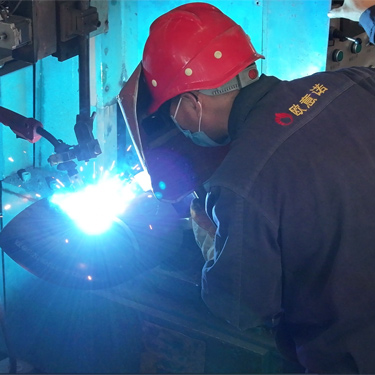
Nov . 19, 2024 20:12
Back to list
safety relief valve
Understanding Safety Relief Valves An Essential Element for Industrial Safety
Safety relief valves (SRVs) are critical components in various industrial applications, designed to protect equipment and ensure safe operations. These valves are engineered to release excess pressure from a system, preventing potential hazards such as explosions or equipment failures. Their significance cannot be overstated, particularly in industries like oil and gas, chemical manufacturing, and power generation, where high-pressure systems are commonplace.
Function and Mechanism
At its core, a safety relief valve functions as a fail-safe mechanism. It monitors pressure levels within a system and automatically opens to release pressure when it exceeds a predetermined limit. This action helps maintain pressure within safe operating limits, thereby safeguarding both personnel and equipment.
Safety relief valves can be broadly categorized into two types relief valves and safety valves. Relief valves are typically used for liquid applications, while safety valves are suited for gas applications. Both types operate on similar principles, but their design and functionality may vary depending on the medium they control and the specific requirements of the system.
Most safety relief valves use a spring-loaded mechanism. When the system pressure surpasses the spring's preset tension, the valve opens to allow the fluid or gas to escape. Once the pressure decreases to manageable levels, the valve closes again, resuming normal operations. In this way, SRVs serve as the first line of defense against pressure-related hazards.
Importance in Industrial Applications
The importance of safety relief valves in industrial applications cannot be overstated. They play a vital role in ensuring the reliability and safety of high-pressure systems. A failure in pressure management can lead to catastrophic outcomes, including explosions, fires, and environmental pollution.
For example, in a chemical processing plant, the reaction between volatile substances can lead to increased pressure within containment vessels. If not managed properly, this pressure can exceed safety limits, resulting in potential disasters. An appropriately sized and calibrated safety relief valve can effectively mitigate this risk by allowing controlled venting of excess pressure.
safety relief valve

Regulatory Compliance and Standards
Safety relief valves are also key to maintaining compliance with industry regulations and safety standards. Various organizations, including the American Society of Mechanical Engineers (ASME) and the National Fire Protection Association (NFPA), have established guidelines for the design, installation, and maintenance of SRVs. Adhering to these standards is crucial for industries to avoid legal repercussions and ensure a safe working environment for employees.
In many jurisdictions, the installation and maintenance of safety relief valves are not just recommended but mandated by law. Regular inspections and testing are necessary to ensure that these valves function correctly and are capable of responding to pressure surges as intended.
Maintenance and Challenges
While safety relief valves are essential, they also require regular maintenance to ensure functionality. Over time, wear and tear can affect a valve's performance, leading to leaks or failures. Maintenance procedures may involve inspections, cleaning, and testing to verify proper operation and pressure settings. Operators should be trained to recognize signs of valve malfunction, such as unusual noises or leaks.
One of the challenges associated with safety relief valves is ensuring they are appropriately sized for the application. An undersized valve may fail to relieve pressure efficiently, leading to dangerous overpressurization, while an oversized valve may result in unnecessary discharges, leading to operational inefficiencies and safety concerns.
Conclusion
In summary, safety relief valves are fundamental to the safe operation of many industrial systems. They protect against excessive pressure, help maintain compliance with safety standards, and ensure operational reliability. Understanding their function, importance, and maintenance requirements is crucial for industries that rely on high-pressure systems. The implementation of reliable safety relief valves not only protects equipment but also enhances workplace safety, ultimately contributing to more efficient and responsible industrial operations.
Latest news
-
Safety Valve Spring-Loaded Design Overpressure ProtectionNewsJul.25,2025
-
Precision Voltage Regulator AC5 Accuracy Grade PerformanceNewsJul.25,2025
-
Natural Gas Pressure Regulating Skid Industrial Pipeline ApplicationsNewsJul.25,2025
-
Natural Gas Filter Stainless Steel Mesh Element DesignNewsJul.25,2025
-
Gas Pressure Regulator Valve Direct-Acting Spring-Loaded DesignNewsJul.25,2025
-
Decompression Equipment Multi-Stage Heat Exchange System DesignNewsJul.25,2025

